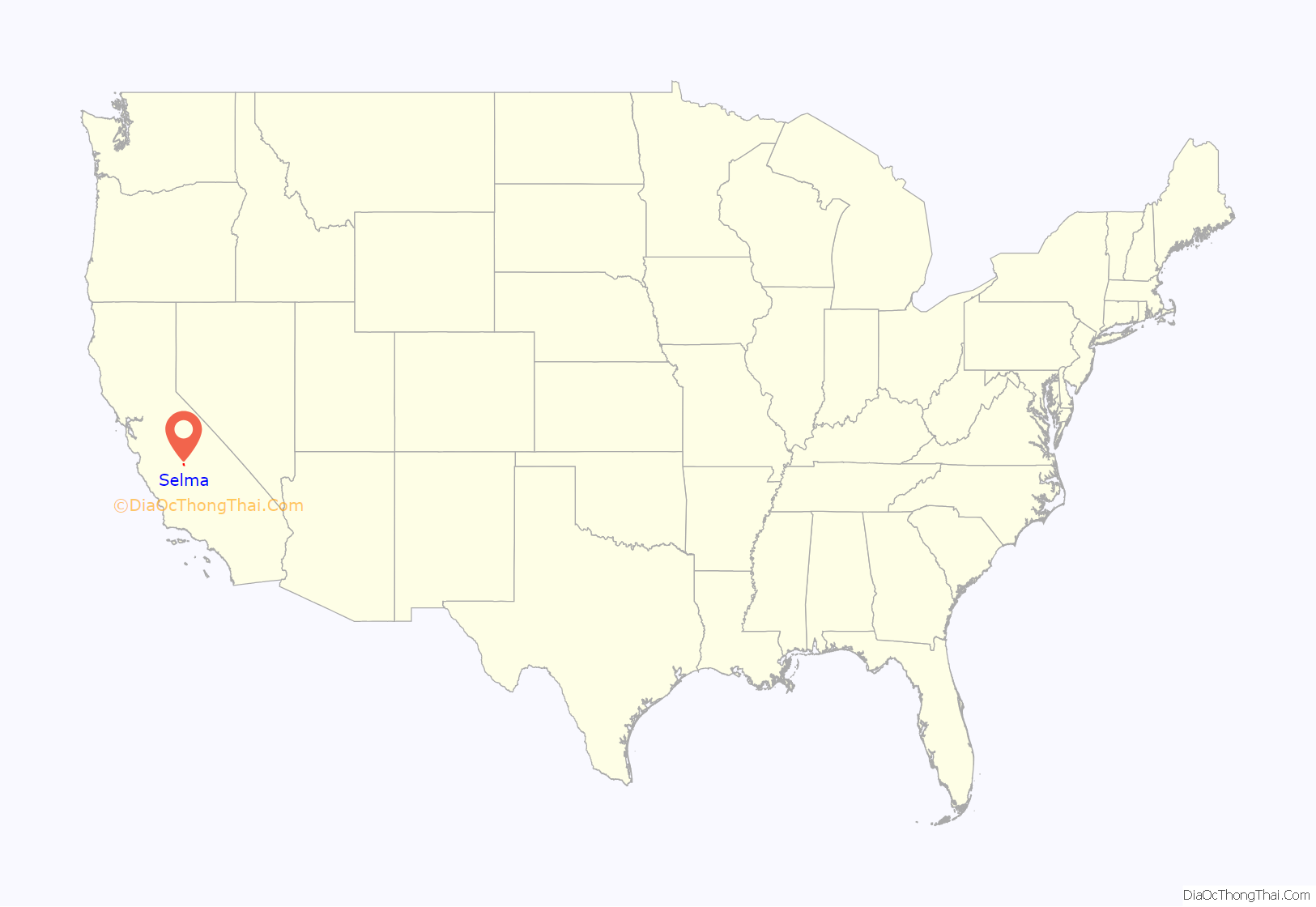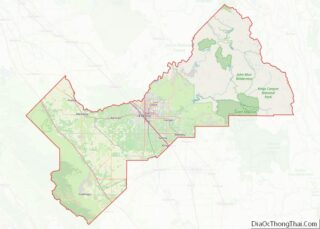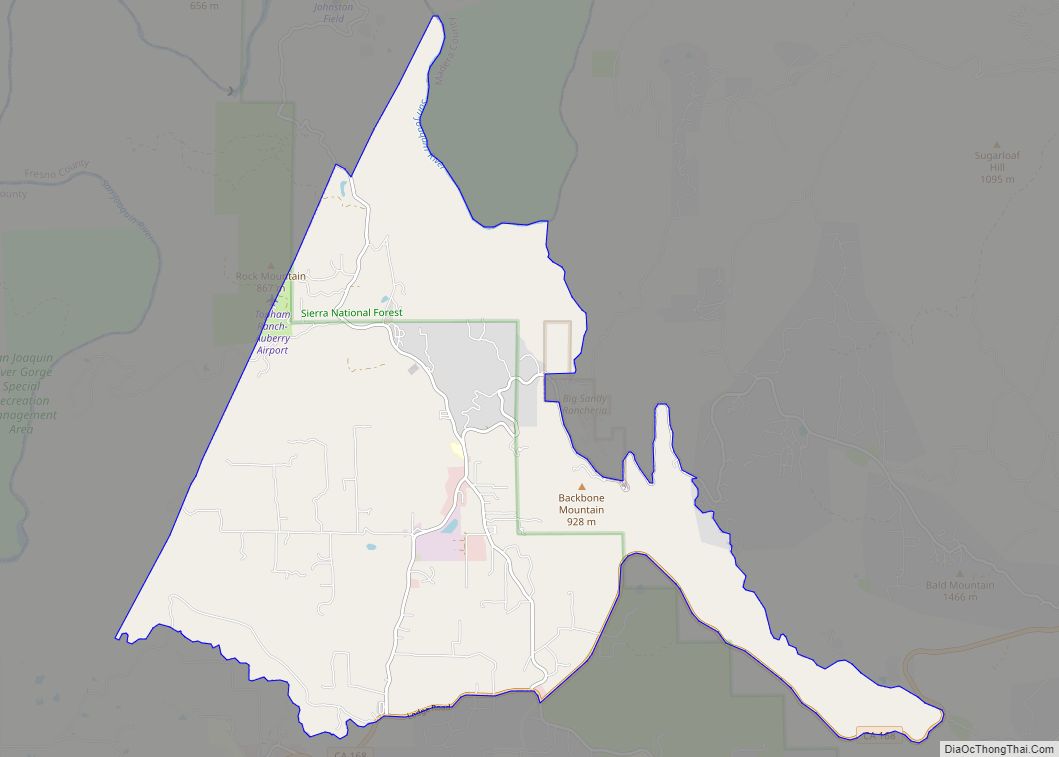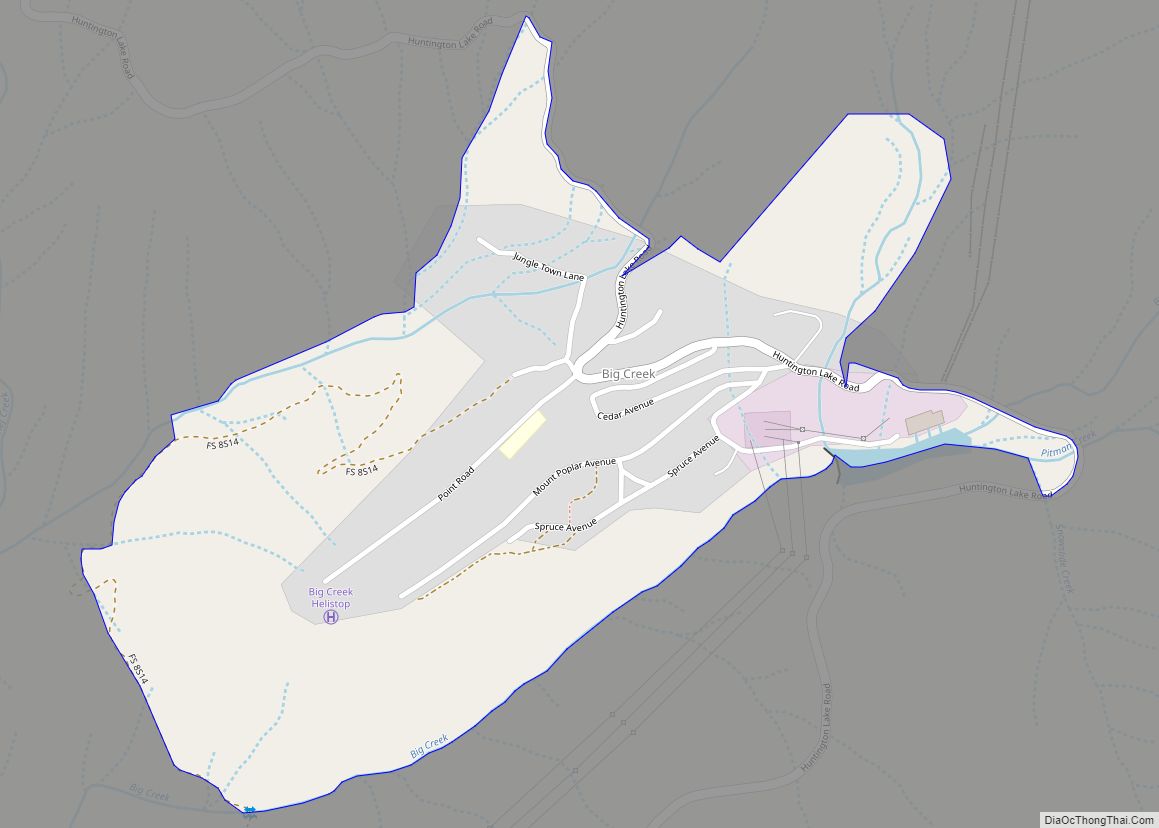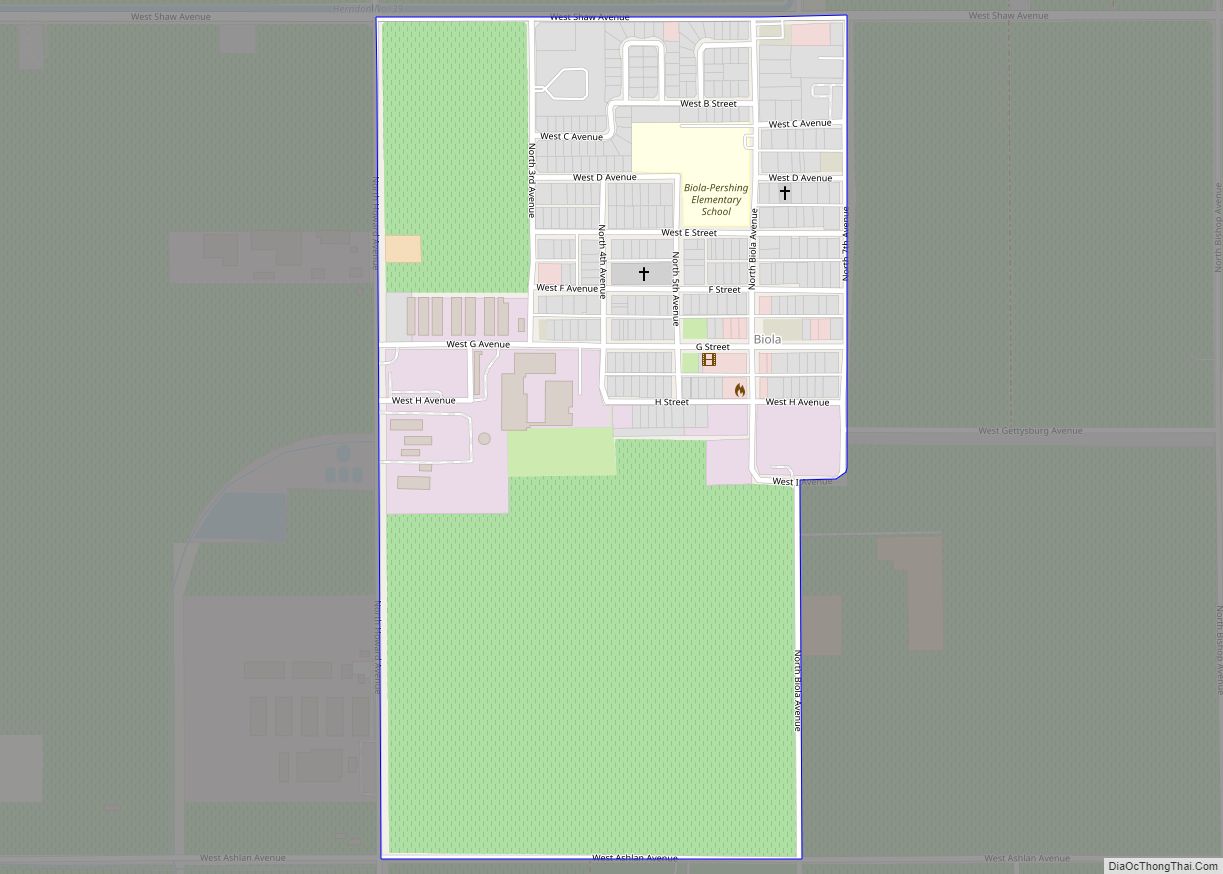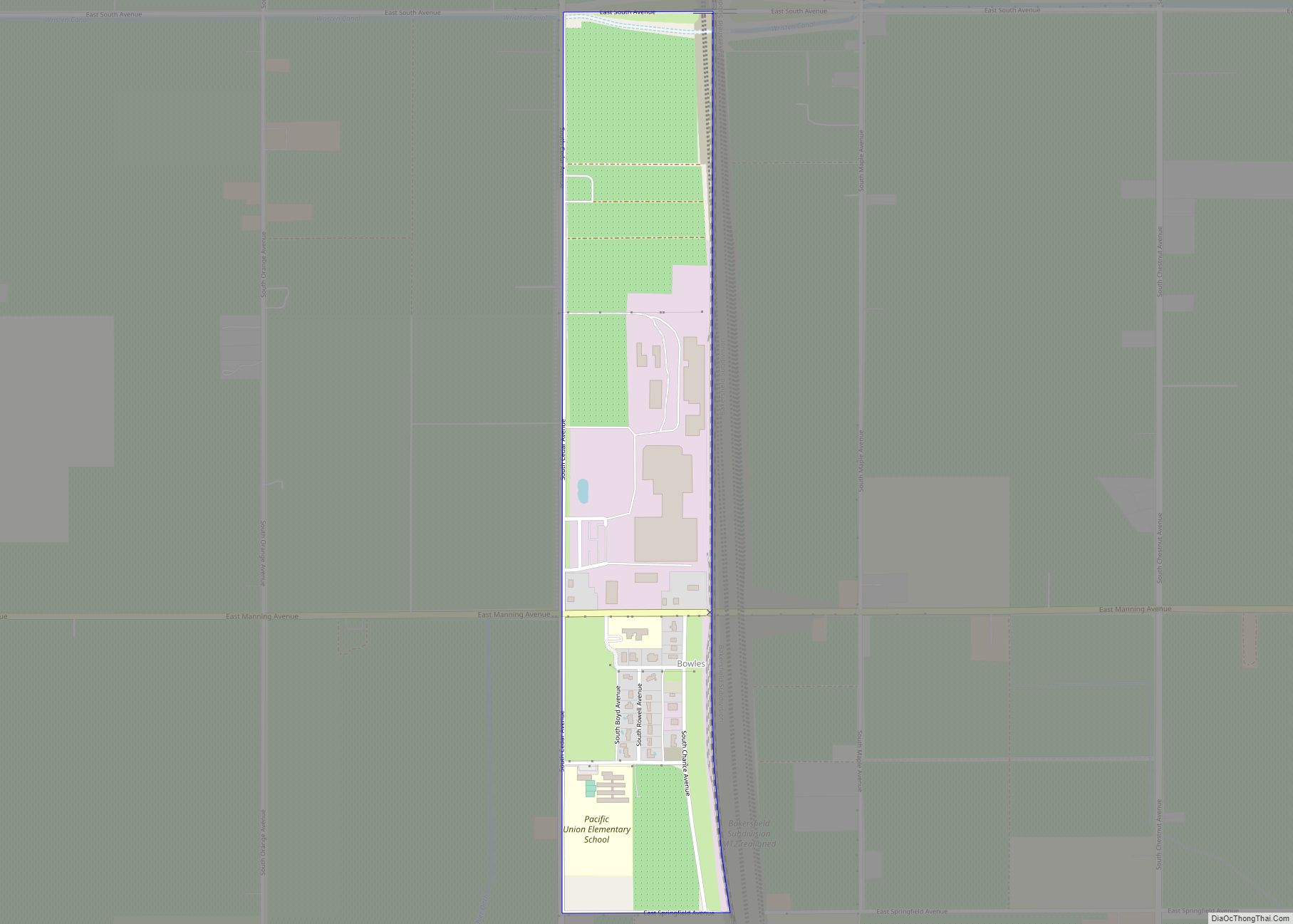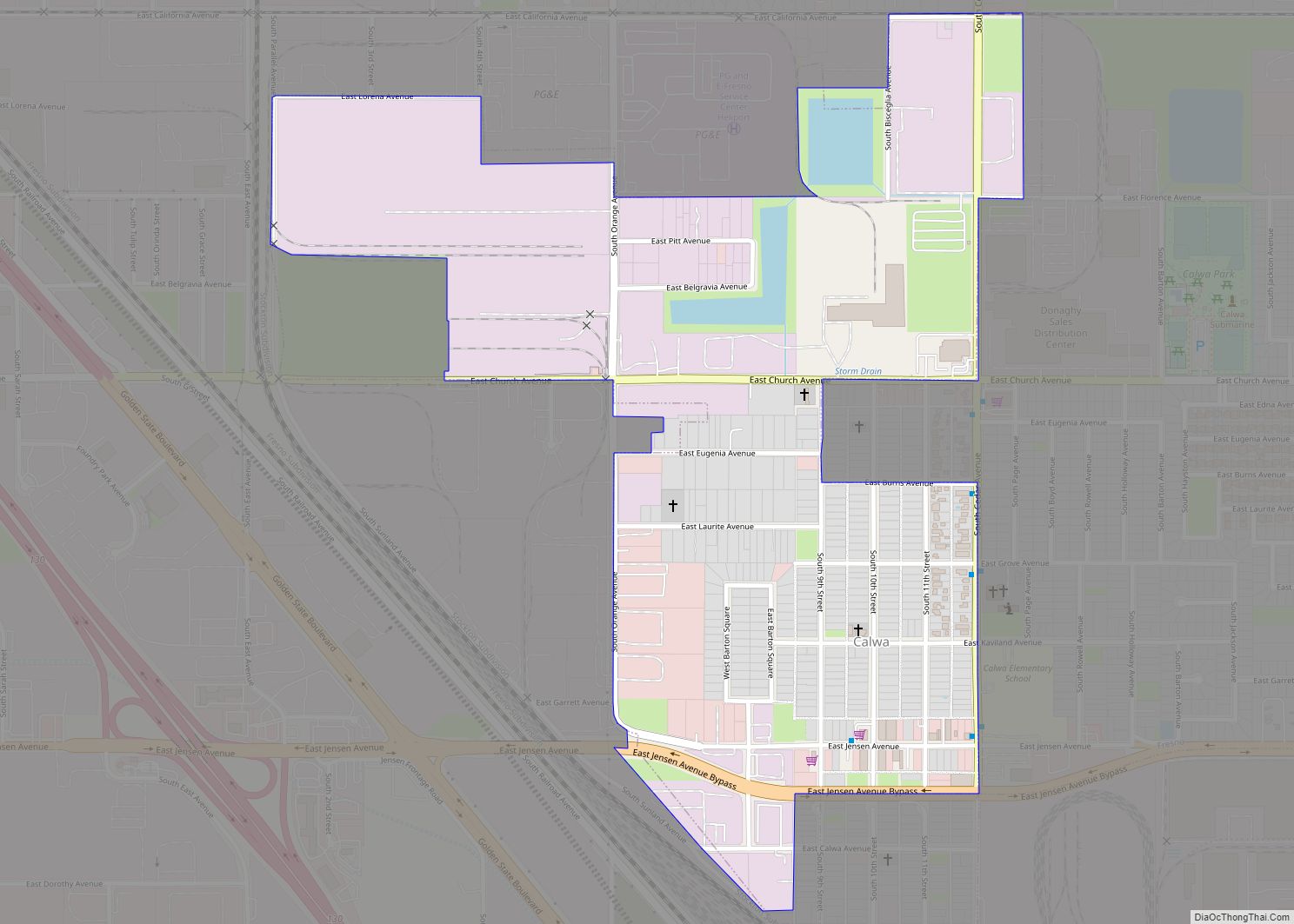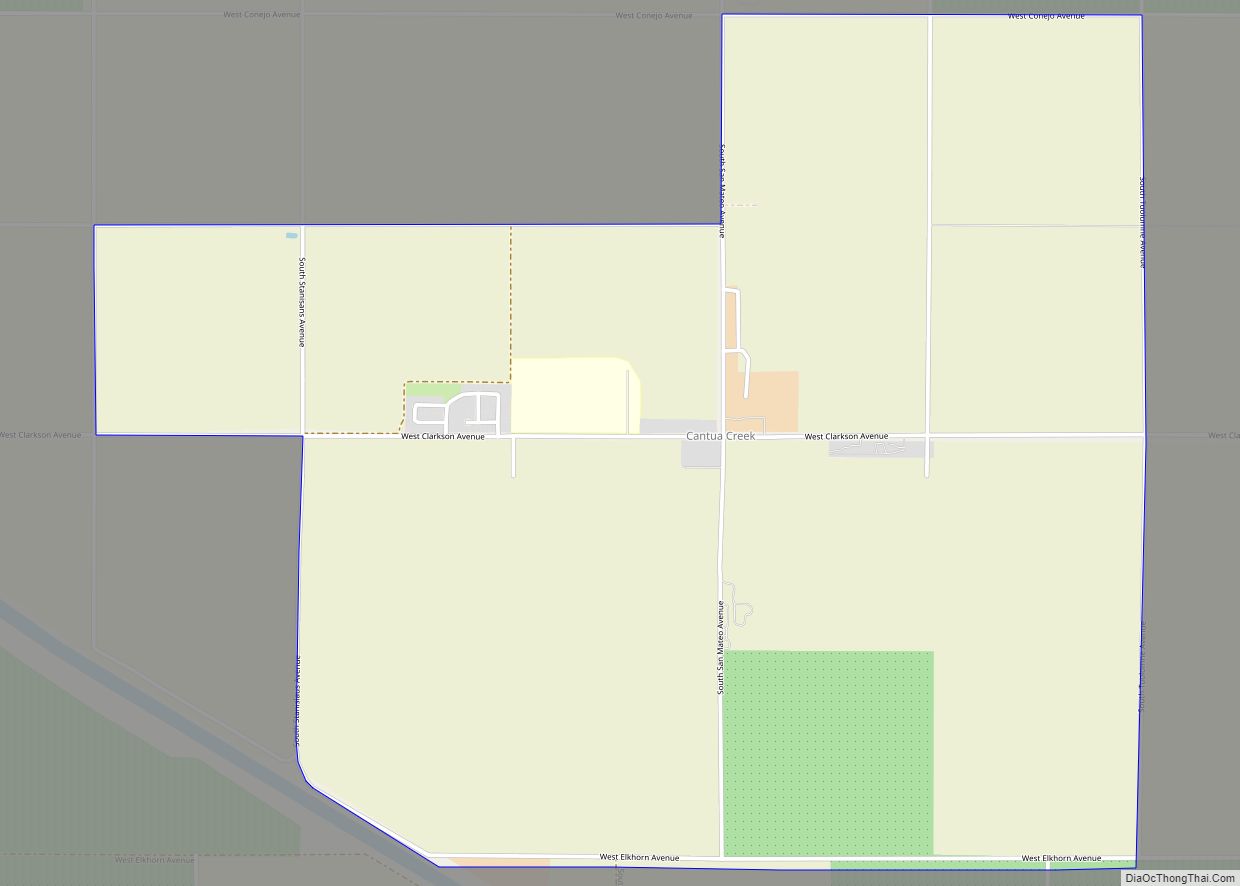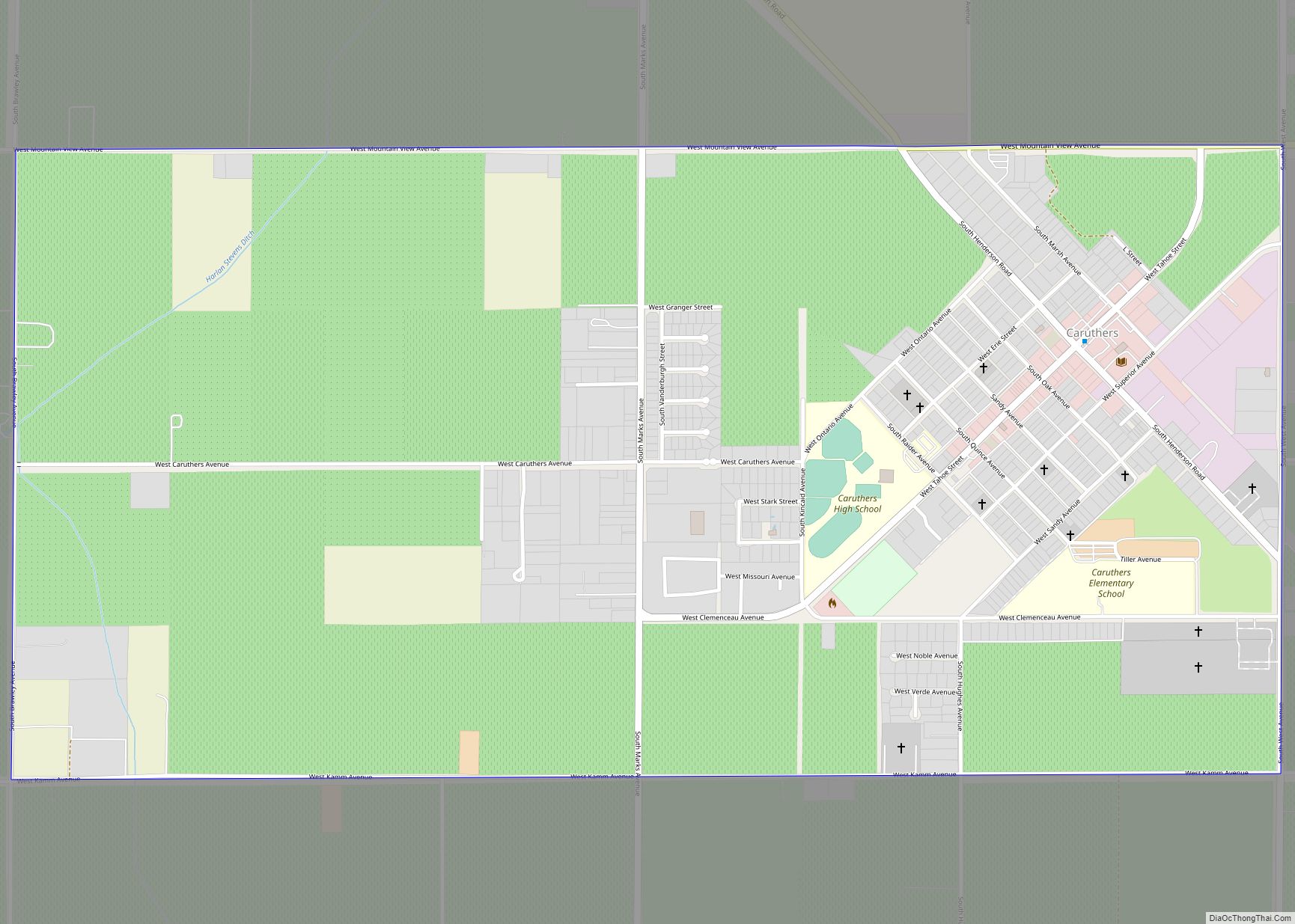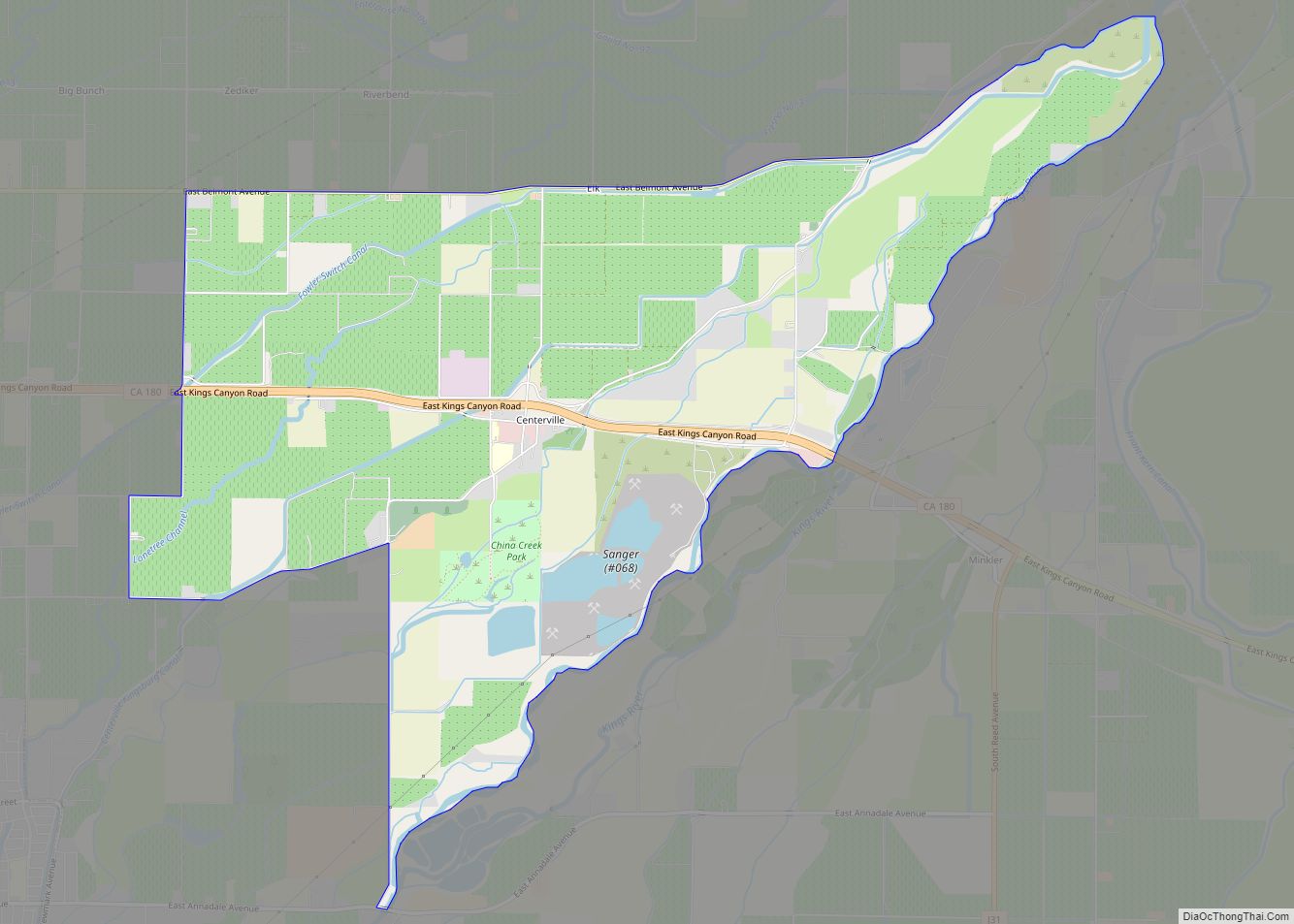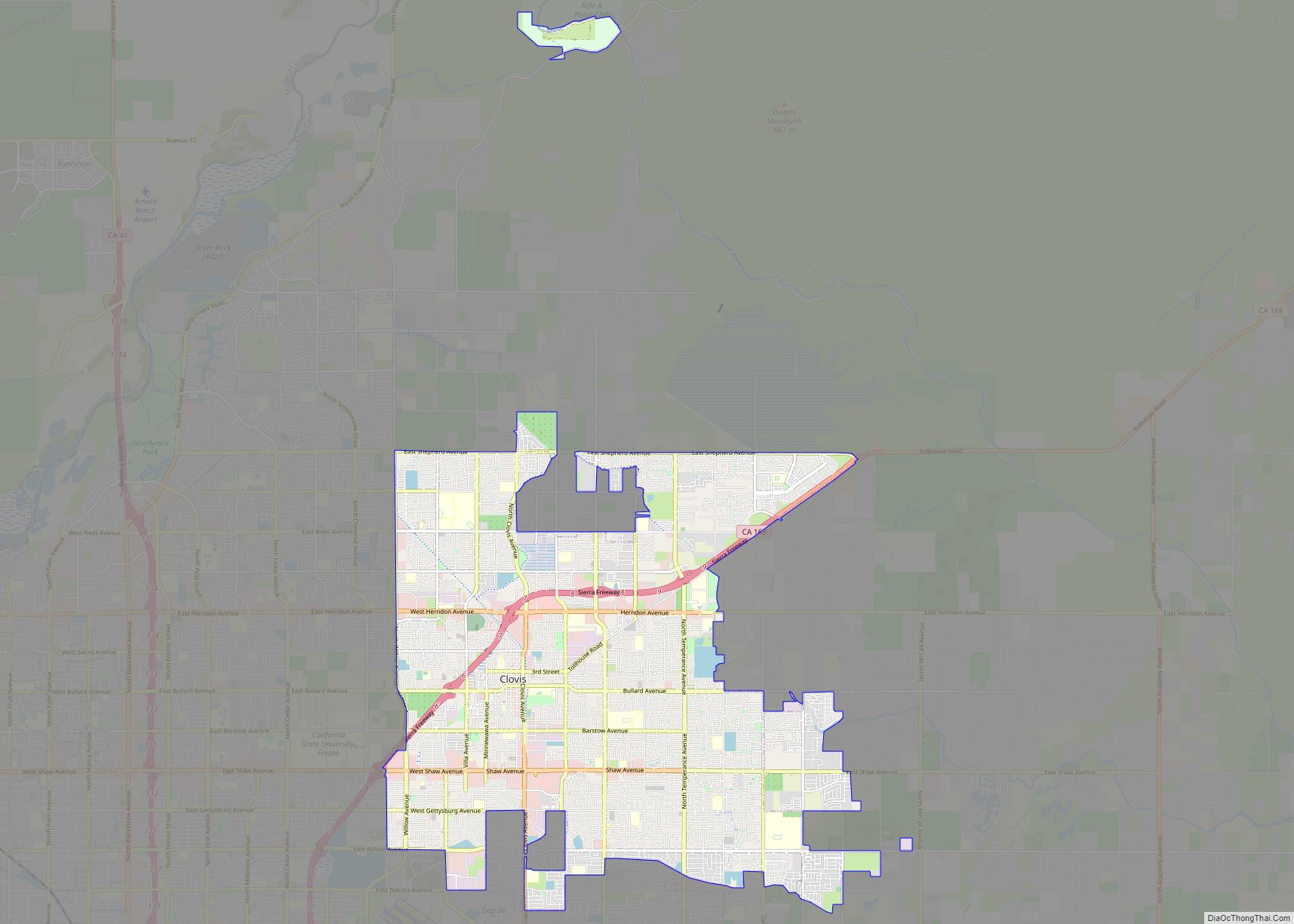Selma is a city in Fresno County, California. The population was 23,319 at the 2010 census, up from 19,240 at the 2000 census. Selma is located 16 miles (26 km) southeast of Fresno, at an elevation of 308 feet (94 m).
| Name: | Selma city |
|---|---|
| LSAD Code: | 25 |
| LSAD Description: | city (suffix) |
| State: | California |
| County: | Fresno County |
| Incorporated: | March 15, 1893 |
| Elevation: | 308 ft (94 m) |
| Total Area: | 5.77 sq mi (14.94 km²) |
| Land Area: | 5.77 sq mi (14.94 km²) |
| Water Area: | 0.00 sq mi (0.00 km²) 0% |
| Total Population: | 23,219 |
| Population Density: | 4,303.92/sq mi (1,661.63/km²) |
| ZIP code: | 93662 |
| Area code: | 559 |
| FIPS code: | 0670882 |
| Website: | www.cityofselma.com |
Online Interactive Map
Click on ![]() to view map in "full screen" mode.
to view map in "full screen" mode.
Selma location map. Where is Selma city?
History
Selma owes its beginnings to farming and to the Southern Pacific Railroad, which began in the 1870s as a branch line of the Central Pacific Railroad. The route of the Southern Pacific through California’s Central Valley gave rise to a string of small towns between Sacramento and Bakersfield. Selma was among them.
In 1880, residents of the rural community that would become Selma established the Valley View School District. The first post office opened in 1880. A decade later, four farmers – Jacob E. Whitson, Egbert H. Tucker, George Otis and Monroe Snyder – formed a partnership and developed a townsite along the railroad. They began auctioning lots and just three years later the city of Selma was formally incorporated.
A persistent local legend is that Selma was named after Selma Gruenberg Lewis (ca. 1867–1944) by Governor Leland Stanford, who was shown her picture by her father. As Lewis first told the story in 1925, Stanford, also a Director of the Central Pacific Railroad, was so taken that he ordered that the next town on the line be named for her. Lewis often repeated the story with further romantic embellishments, and it came to be accepted as fact despite a lack of documentary evidence. Lewis is buried in Floral Memorial Park in Selma, and her marker repeats the story. Subsequent investigation indicates instead that the town was in fact named for Selma Michelsen (1853–1910), wife of a railroad employee who had submitted her name for inclusion on a list of candidate names prepared by his supervisor. George Otis selected the name from this list, in consultation with other local businessmen.
Along with Fowler to its immediate north and Kingsburg to its south, Selma was a railroad stop where agricultural goods could be loaded for shipping. As in the rest of the United States, the railroad played a lesser role as the 20th century progressed. What was once a handsome passenger terminal in the city’s downtown became Selma’s police station.
In the late 19th century, the town also boasted a water-driven mill for grinding wheat to flour. The mill was powered by the C&K Canal, a seasonal irrigation channel that was known in Selma as the Mill Ditch.
Agribusiness
Wheat growing was Selma’s first economic engine but was replaced by orchards and vineyards when farmers realized how well peaches, plums, and grapes grew in the sandy soil, irrigated with snow-melt water imported through canals from the nearby Sierra Nevada mountain range.
Although raisins (sweet grapes preserved by sun-drying) soon became the major crop, Selma called itself the “Home of the Peach” and was also known as “A Peach of a City.” Through the 1960s, a major seasonal employer was the local peach cannery, where Libby’s brand fruit was packed. Peaches and other tree fruit are still grown in abundance.
With 90 percent of U.S. raisins produced within eight miles of Selma, the city adopted the slogan “Raisin Capital of the World” in 1963. Area vineyards also produce table grapes. A decline in family farming, the national trend in U.S. agriculture after World War II, and depressed prices for raisins and table grapes, especially in the last decades of the twentieth century, were drains on the Selma-area agribusiness economy. Harris Ranch is based in Selma.
Shifting business center
Like many other American cities, Selma suffered a decline in its old downtown in the late decades of the 20th century and into the 21st century. Post–World War II development spread the growing city to the north and east, away from its business center. U.S. Highway 99, once a main road north and south through town, running parallel to the railroad, was rebuilt as a freeway (now SR 99) in the 1960s. Several blocks to the west of the old road (now Whitson Street and Golden State Boulevard), the freeway bisects the oldest residential neighborhood in Selma. Freeway travel made the new shopping malls of Fresno more accessible. The freeway also made Selma more attractive as a place to live for Fresno workers, who contributed to ever-faster residential growth into the 21st century.
The downtown experienced one of its biggest changes when Walmart built a large retail store at the intersection of East Floral Avenue and the freeway—at the northwest edge of town. As the 21st century began, this area became the de facto commercial center of the city providing great economic benefits. The old downtown, despite vacant storefronts, remained a struggling but viable district of city offices and small businesses.
Media
The weekly newspaper is The Selma Enterprise. Residents are served by the daily Fresno Bee and by Fresno-based television and radio stations.
Public schools
The Selma Unified School District has eight neighborhood elementary schools. Students from all of these schools are channeled to Abraham Lincoln Middle School and continue on to Selma High School or two alternative high schools. Selma High School fields a range of sports teams nicknamed The Bears. School colors are orange and black. The yearbook is entitled The Magnet.
Selma Road Map
Selma city Satellite Map
Geography
According to the United States Census Bureau, the city covers an area of 5.136 square miles (13.30 km), all of it land.
See also
Map of California State and its subdivision:- Alameda
- Alpine
- Amador
- Butte
- Calaveras
- Colusa
- Contra Costa
- Del Norte
- El Dorado
- Fresno
- Glenn
- Humboldt
- Imperial
- Inyo
- Kern
- Kings
- Lake
- Lassen
- Los Angeles
- Madera
- Marin
- Mariposa
- Mendocino
- Merced
- Modoc
- Mono
- Monterey
- Napa
- Nevada
- Orange
- Placer
- Plumas
- Riverside
- Sacramento
- San Benito
- San Bernardino
- San Diego
- San Francisco
- San Joaquin
- San Luis Obispo
- San Mateo
- Santa Barbara
- Santa Clara
- Santa Cruz
- Shasta
- Sierra
- Siskiyou
- Solano
- Sonoma
- Stanislaus
- Sutter
- Tehama
- Trinity
- Tulare
- Tuolumne
- Ventura
- Yolo
- Yuba
- Alabama
- Alaska
- Arizona
- Arkansas
- California
- Colorado
- Connecticut
- Delaware
- District of Columbia
- Florida
- Georgia
- Hawaii
- Idaho
- Illinois
- Indiana
- Iowa
- Kansas
- Kentucky
- Louisiana
- Maine
- Maryland
- Massachusetts
- Michigan
- Minnesota
- Mississippi
- Missouri
- Montana
- Nebraska
- Nevada
- New Hampshire
- New Jersey
- New Mexico
- New York
- North Carolina
- North Dakota
- Ohio
- Oklahoma
- Oregon
- Pennsylvania
- Rhode Island
- South Carolina
- South Dakota
- Tennessee
- Texas
- Utah
- Vermont
- Virginia
- Washington
- West Virginia
- Wisconsin
- Wyoming
